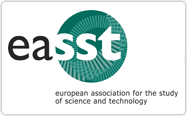Modes and Existences in Citizen Science
Thoughts from Earthquake Country
Abstract
In the Bay Area of San Francisco, the earthquake contours are not easy to define: seismology is still a relatively recent science, and controversies around methods to evaluate the earthquake risk are constant. In this context, the invitation to think about the modes of citizen science is an opportunity to reflect on the modality of hybridized scientific practices as well as the process by which the plurality and complexity of the earthquake characteristics can be articulated, and sometime reconciled. Looking at different existences of the earthquake risk, the paper investigates different assemblages that question the clear-cut distinction between citizen science and science. I’ll situate the question of the mode of citizen science within the larger framework of interdisciplinarity knowledge infrastructures and the work on ‘mode of existence’ initiated by Bruno Latour and Isabelle Stengers (2009). Expanding our understanding with regard to how CS is performed opens the possibility of reconsidering the specific types of assemblages and infrastructures from which these modes emerge and on their distinct trajectories. It is also an invitation to make visible the integration processes, the communities, and the imaginations that “make” science.





